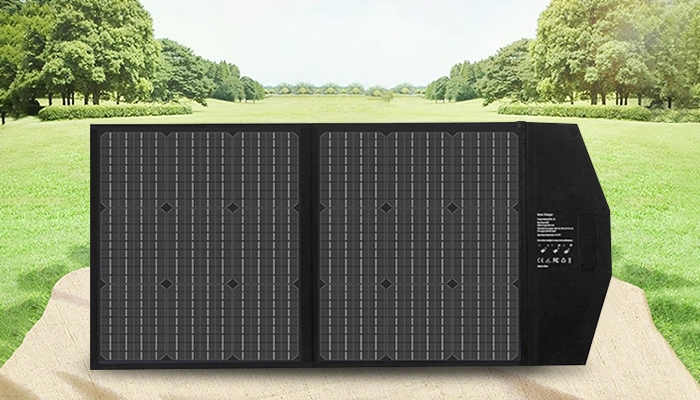As global energy demand continues to rise and environmental concerns grow, solar energy, as a clean and renewable resource, is leading the energy revolution. Behind this revolution, a technology is quietly changing our way of life—photovoltaic (PV) power generation. Many people may be familiar with solar panels, but did you know that one square meter of solar panels can do far more than you imagine? It is not just a simple power generation tool; its applications across various fields are bringing environmental, economic, and social impacts.
The Principle of Photovoltaic Power Generation: Converting Sunlight into Electricity
Before we dive in, let Inverter.com briefly explain how photovoltaic power generation works. The core principle of photovoltaic technology comes from the photoelectric effect discovered in the 19th century. In 1887, German physicist Heinrich Hertz discovered that certain materials generate voltage when exposed to sunlight. This phenomenon was later named the "photovoltaic effect." Simply put, photovoltaic power generation involves special materials (such as silicon) absorbing sunlight, which excites electrons to flow, converting the energy into electricity. This process doesn’t rely on mechanical movement or traditional fuel sources, making it a clean and green energy solution.
Based on this principle, modern photovoltaic technology has been widely applied, from household appliances to large power plants, where solar panels convert sunlight into electricity. So, how exactly does the question "What can one square meter of solar panels do?" come into play?

What Can One Square Meter of Solar Panels Do?
1. Power Small Household Appliances
Take a 250W solar panel as an example. In sunny conditions, one square meter of solar panels can generate about 2 kWh (2000 watt-hours) of electricity after working for 8 hours. This is enough to run some household appliances for an extended period.
- 25W LED Light for 80 Hours: LED lights are energy-efficient. With one square meter of PV modules, the LED light can run for 80 hours with just one full charge of 8 hours of sunlight, meeting most daily lighting needs.
- Electric Vehicle Running 10 Kilometers: As electric vehicles become more popular, charging facilities have become essential. One square meter of photovoltaic module can provide enough electricity to drive an electric car for 10 kilometers. This is particularly useful for users with short daily commutes.
- Charging a Smartphone Over 100 Times: Modern smartphone batteries typically range from 3,000mAh to 5000mAh. One square meter of solar panels can generate enough electricity to charge a smartphone more than 100 times, making solar charging particularly convenient for outdoor activities or travel.
2. Solar Systems as Power Hubs for Large Devices
In addition to powering small household appliances, solar panels play a crucial role in larger systems, providing continuous power for high-energy devices.
- One Square Meter on a Water Surface Can Generate 20,000 kWh in a Year: Installing solar panels on water surfaces not only harnesses solar energy but also saves land resources. Large photovoltaic power plants can be constructed on water surfaces to supply electricity to surrounding areas. For example, solar-powered water pumps are widely used in agricultural irrigation or remote areas. These pumps use solar energy to extract water for farmland or domestic use, benefiting regions with limited or no access to electricity. It is estimated that one square meter of solar panels can generate around 20,000 kWh of electricity in a year, significantly helping energy-deficient areas by solving water shortages and reducing dependence on fossil fuels.
- Solar-Powered Yacht: Can Sail for 3 Days Even Without Sunlight: With advancements in solar technology, photovoltaic panels are widely used in marine vessels. Solar-powered yachts use solar energy to power electric engines, and not only can they use solar power for sailing, but the system also provides electricity for other onboard devices. Even without sunlight, the yacht can continue to operate for 3 days on stored energy.
- Solar-Powered Aircraft Flew Around the World for 16 Months: In aviation solar energy has also found its place. Solar-powered aircraft, using lightweight designs and large areas of solar panels, can be fully powered by the sun and even complete a global flight. In 2015, the solar-powered aircraft Solar Impulse 2 successfully circumnavigated the globe, setting a historic milestone in solar aviation.
3. Contributing to Environmental and Ecological Benefits
Solar energy not only provides power for human use but also has a profound impact on the environment. With advancements in photovoltaic technology, solar panels are no longer just power generators; they also play an increasingly important role in improving ecological environments.
- Reducing Carbon Emissions: According to statistics, installing a 1MW rooftop solar system can save approximately 300,000 yuan in electricity bills each year and reduce significant carbon emissions. Each year, a photovoltaic system can cut about 298 tons of standard coal, reduce CO2 emissions by about 774 tons, cut sulfur dioxide emissions by about 22 tons, and reduce nitrogen oxide emissions by about 11 tons. These figures demonstrate the massive potential of solar energy in environmental protection, particularly in combating climate change and reducing greenhouse gas emissions.
- Ecological Protection and Green Development: In urban construction, the application of photovoltaic technology is driving the development of green buildings. Photovoltaic roofs and photovoltaic facades, for example, integrate solar power generation into architectural design, combining aesthetics with functionality. Through the promotion of green buildings, photovoltaic systems are contributing positively to improving urban air quality, reducing energy consumption, and enhancing building energy efficiency.

4. The "Photovoltaic Oasis" in the Desert: The Huge Potential of the Photovoltaic Industry
Deserts are often seen as barren wastelands, but for the photovoltaic industry, deserts represent a massive resource pool. Take the Taklamakan Desert in China as an example; once covered with pv modules, the desert can provide enough power to support the entire country for more than 11 days. This is because the desert regions experience intense solar radiation and have long annual sunshine hours, making them ideal for solar panel installation and power generation.
Building large photovoltaic power stations in desert areas not only significantly improves energy production efficiency but also helps address desertification. The installation of solar panels can prevent wind erosion and reduce sandstorms, effectively creating a green "photovoltaic oasis."
The Future of Photovoltaic Panels: From Local to Global Energy Revolution
With continuous technological innovations, the efficiency of photovoltaic power generation is constantly improving. In the future, solar arrays will be more widely applied, continuing to play a key role in homes, transportation, and buildings while also becoming an integral part of the global energy transformation. It is expected that shortly, solar energy will become a pillar of the global energy system, replacing traditional fossil fuels.
Conclusion
In summary, although one square meter of solar panels may seem insignificant, its potential is vast. Whether providing power for daily life or supporting large systems and devices, the application of photovoltaic power generation is already embedded in our lives. In the future, as technology advances and application scenarios expand, solar panels will have the ability to change our dependence on energy and drive the global transition to a green energy structure.
So, when we ask, "What can one square meter of solar panels do?" the answer is no longer just about providing electricity. It symbolizes a green, sustainable future, representing the fusion of technological innovation and environmental protection, pushing society toward a low-carbon, eco-friendly, and sustainable future.
